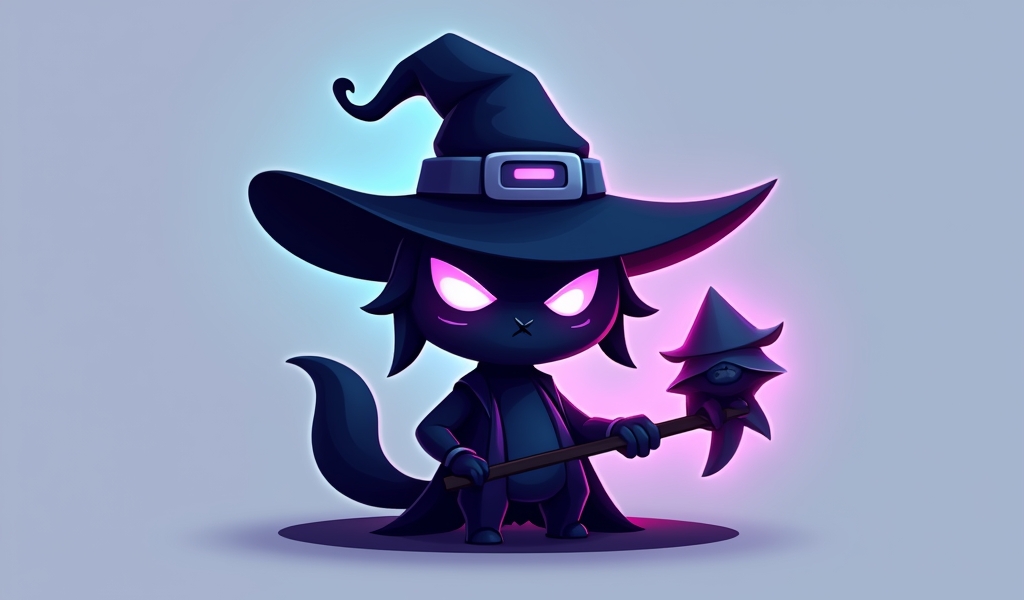Overview
How to play Vex effectively involves mastering her unique shadow mechanics and anti-mobility tools that make her particularly strong against dash-heavy champions in the mid-lane. The sarcastic yordle mage dominates the Rift through strategic use of her passive Doom ‘n Gloom, proper combo execution, and smart positioning that transitions from lane dominance to impactful team fighting.
Table of Contents
Mastering Vex, the Gloomist, can elevate your mid-lane prowess in League of Legends. This sarcastic yordle mage brings unique shadow mechanics and anti-mobility tools that can dominate the Rift when played correctly. If you’re wondering how to play Vex effectively, this comprehensive guide will walk you through essential strategies, combos, and tips to maximize her gloomy potential.
Understanding Vex’s Abilities and Passive
Learning how to play Vex starts with thoroughly understanding her unique kit. Vex’s gameplay revolves around her passive, Doom ‘n Gloom, which marks enemies who dash and empowers her next basic ability with bonus effects and damage.
Her passive has two components: Gloom and Doom. Gloom applies a mark to enemies who dash, and Doom periodically empowers her next basic ability. This interaction is what makes Vex particularly effective against mobile champions like Yasuo, Yone, or Akali.
Here’s a breakdown of Vex’s abilities:
- Passive – Doom ‘n Gloom: Periodically empowers Vex’s next basic ability, causing it to fear enemies and deal bonus magic damage. Nearby enemies who dash get marked with Gloom.
- Q – Mistral Bolt: Sends a wave of mist that deals magic damage. When empowered, it deals bonus damage and slows enemies.
- W – Personal Space: Creates a shield and emits a shockwave dealing magic damage. When empowered, it fears enemies.
- E – Looming Darkness: Vex commands her shadow to a location, dealing magic damage and marking enemies with Gloom. When empowered, it increases the magic damage.
- R – Shadow Surge: Vex launches her shadow, dealing magic damage to the first enemy hit. She can recast to dash to the marked target, dealing additional damage to nearby enemies.
Understanding the cooldown of your passive is crucial when learning how to improve your Vex gameplay. The green bar under your mana indicates when your passive is ready, allowing you to plan engagements accordingly.

Mastering Vex’s Core Combos and Execution
To effectively play Vex, you need to master her core ability combinations. Her combos vary depending on the situation, but understanding these fundamental sequences will significantly improve your impact.
The standard trading combo in lane is E-Q. Cast your E to mark enemies with Gloom and follow up with Q for additional damage. When your passive is charged, W-E-Q becomes a devastating combo that fears enemies while dealing substantial damage.
For all-in situations, your ultimate provides excellent engage potential. The R-R-W-E-Q combo allows you to catch enemies off guard and burst them down quickly. Start with R to mark a target, recast R to dash to them, then follow up with W for the fear (if passive is ready) and E-Q for maximum damage.
When being ganked or in defensive situations, save your W for its shield and fear effect. A well-timed W can turn the tables and even secure kills on aggressive junglers. Professional players often recommend practicing these combos in the Practice Tool until they become second nature.
Remember that Vex’s passive has separate cooldowns for Gloom and Doom. Tracking both is essential for maximizing your damage output and crowd control potential in extended fights.
Optimal Item Builds and Runes for Vex
Building Vex correctly is crucial to amplify her burst damage and survivability. As an AP burst mage, Vex benefits from items that provide ability power, magic penetration, and some defensive stats.
For mythic items, Luden’s Echo is generally the best choice due to its magic penetration and burst damage. Alternatively, Liandry’s Anguish works well against tanky teams, while Everfrost provides additional crowd control against mobile compositions.
Core items for Vex typically include:
- Luden’s Echo: Provides burst damage, mana, and magic penetration.
- Shadowflame: Offers penetration against shields and high health targets.
- Zhonya’s Hourglass: Essential for survivability and playmaking.
- Rabadon’s Deathcap: Amplifies your AP for maximum damage output.
- Void Staff: Necessary against magic-resistant enemies.
For runes, Electrocute is the primary keystone that synergizes with Vex’s burst-oriented playstyle. Your typical rune page should include:
- Primary (Domination): Electrocute, Taste of Blood, Eyeball Collection, Ultimate Hunter
- Secondary (Sorcery): Transcendence, Gathering Storm/Scorch
- Stat Shards: Adaptive Force, Adaptive Force, Armor/Magic Resist (based on matchup)
Alternatively, expert Vex players sometimes opt for First Strike or Arcane Comet depending on matchups and team composition. First Strike provides additional gold generation against melee champions you can safely harass, while Arcane Comet offers reliable poke damage in ranged matchups.
Early Game Strategy and Lane Dominance
The early game is where Vex can establish lane dominance and set herself up for success. Learning how to play Vex effectively in the early game is all about wave management, proper trading, and utilizing your anti-mobility kit.
Start by focusing on CS and using your Q to farm safely when needed. Vex has decent wave clear with her Q and E combination, allowing you to push waves efficiently when necessary. Against melee champions, you can be more aggressive with auto-attacks and Q pokes.
Save your W for when enemies try to engage on you or when your jungler comes for a gank. The fear component makes it a powerful defensive and offensive tool. Using it carelessly will leave you vulnerable to all-ins and ganks.
Ward diligently, especially against mobile junglers like Lee Sin or Elise who can punish your lack of mobility. Proper vision control helps you position aggressively when it’s safe to do so. League coaching experts emphasize that vision is particularly important for immobile mages like Vex.
Against dash-heavy champions like Yasuo, Irelia, or LeBlanc, you have a natural advantage thanks to your passive. Bait their mobility spells and punish them with your empowered abilities. However, be cautious against champions with long-range abilities who can poke you without triggering your passive.
Look for roaming opportunities after level 6. Vex’s ultimate makes her ganks extremely potent, especially in side lanes where you can catch enemies off guard. Coordinate with your jungler to maximize pressure across the map.
Mid to Late Game Transitions with Vex
As the game progresses to mid and late stages, how you play Vex needs to adapt. Your role transitions from lane domination to team fighting and objective control. During this phase, positioning becomes increasingly important.
In the mid-game, focus on securing vision around key objectives like Dragon and Herald. Vex excels at controlling chokepoints with her E-Q combination, making her effective in jungle skirmishes. Look for picks with your ultimate before major objective fights to create a numbers advantage for your team.
When sieging or defending turrets, use your E-Q to clear waves safely. Your W provides a shield against poke and can fear multiple enemies if they try to engage. This makes Vex exceptionally good at both sieging and holding defensive positions.
As Riot’s official champion guide suggests, Vex’s ultimate becomes a powerful flanking tool in the late game. Look for opportunities to catch out squishy carries from unexpected angles, but be mindful of your positioning after going in.
Split pushing isn’t Vex’s strongest suit due to her lack of tower-taking abilities. Instead, group with your team and use your crowd control and burst damage in coordinated fights. In late-game scenarios, a single well-executed R-R-W combo on an enemy carry can win team fights outright.
Remember that your passive fear becomes increasingly valuable as the game progresses. Timing it well in team fights can disrupt enemy engages and create openings for your team to capitalize on.
Team Fighting and Positioning as Vex

Mastering team fights is essential when learning how to play Vex effectively. Unlike traditional mages who stay at the backline, Vex has a more flexible positioning style due to her ultimate.
In standard team fight scenarios, position yourself at the mid-range, looking to land your E-Q combo on multiple enemies. Save your W for when enemies dive your backline or when you need to peel for yourself or your ADC. Protecting your marksman can be crucial in late-game scenarios.
When your ultimate is available, you have two main options:
- Backline Access: Use R-R to dive onto enemy carries when they’re isolated or out of position.
- Counter-Engage: Hold your R as a counter to enemy engagers, using it to follow up on your team’s initiation.
Remember that after using your ultimate to engage, you’ll be in the middle of the enemy team without escape tools. Make sure your team can follow up, or you have Zhonya’s Hourglass ready to buy time.
Vision control becomes even more critical in the late game. As professional guides often point out, proper ward placement allows you to find flanking opportunities with your ultimate while avoiding getting caught out yourself.
In chaotic team fights, prioritize using your passive-empowered W for the AoE fear. This can completely disrupt enemy coordination and turn the tide of a fight. Track mobile champions and save your passive for when it matters most.
Lastly, don’t underestimate Vex’s clean-up potential. If your team has already engaged and enemies are at low health, your R-R combination can quickly finish off stragglers trying to escape.
Key Matchups and Counters
Understanding favorable and unfavorable matchups is crucial when learning how to play Vex. Her anti-mobility design gives her natural advantages against certain champions while making her vulnerable to others.
Vex thrives against dash-heavy champions like:
- Yasuo/Yone: Their dash-reliant kits trigger your passive constantly, making trading heavily in your favor.
- Zed: You can fear him when he ults onto you and punish his shadow swaps.
- Irelia: Her Q resets on minions trigger your passive, making her all-ins risky.
- Akali: Her E and R dashes give you opportunities to punish with your passive.
However, Vex struggles against champions with:
- Long-range abilities: Xerath, Vel’Koz, and Lux can harass you without triggering your passive.
- Point-and-click CC: Champions like Annie and Malzahar can lock you down before you can react.
- Sustained damage: Vladimir and Swain can outsustain your burst and wear you down in extended fights.
When facing difficult matchups, focus on farming safely and look for roaming opportunities with your ultimate. Coordinate with your team to create map pressure elsewhere instead of trying to force advantages in losing lanes.
Against control mages, consider adjusting your build to include Mercury’s Treads for magic resistance and Banshee’s Veil to block crucial spells. Against assassins, rushing Zhonya’s Hourglass should be a priority.
Remember that even in unfavorable matchups, your team fighting potential remains strong. Focus on scaling and making an impact in skirmishes around objectives rather than trying to win lane at all costs.
Conclusion
Mastering how to play Vex requires understanding her unique anti-mobility kit, combo execution, and strategic adaptability throughout the game. Her ability to punish mobile champions and disrupt team fights with fear makes her a powerful pick in the current meta.
Focus on leveraging her passive effectively, timing your engages with her ultimate, and positioning carefully in team fights. With practice, you’ll be able to utilize her full potential as both a lane bully and team fight monster.
Remember that Vex’s playstyle shifts between defensive counter-engagement and aggressive picks with her ultimate. This versatility allows you to adapt to different team compositions and game states.
Whether you’re looking to counter the dash-heavy champions that dominate solo queue or add a powerful mage to your champion pool, investing time in learning how to play Vex will definitely be rewarding. With her combination of burst damage, crowd control, and unique anti-mobility mechanics, Vex brings a refreshing playstyle to the mid lane.
For more personalized guidance on mastering Vex or improving your mid lane gameplay, consider working with a professional League coach who can identify specific areas for improvement in your gameplay.
Frequently Asked Questions
Is Vex good for beginners in League of Legends?
Vex has a moderately accessible kit with straightforward abilities, making her decent for beginners who understand basic positioning. Her lack of complex mechanics makes her easier to pick up than champions like Azir or Zoe, though managing her passive timing requires some practice.
What role is Vex best played in?
Vex is primarily designed as a mid lane mage, where she can best utilize her anti-mobility kit against assassins and divers. While some players have found success with Vex in the support role, mid lane remains her optimal position due to her scaling and roaming potential.
How do I counter Vex in lane?
Counter Vex by playing champions with long-range abilities that don’t rely on dashes, such as Xerath or Vel’Koz. Bait out her fear before engaging, track her passive cooldown (the green bar under her health), and avoid fighting when her passive is ready.
What should I max first on Vex?
Max Q (Mistral Bolt) first for waveclear and consistent damage, followed by W (Personal Space) for the increased shield and damage. E is typically maxed last as its utility doesn’t scale as well with points.
When should I pick Vex in draft?
Pick Vex when facing teams with multiple dash-heavy champions like Yasuo, Yone, Irelia, or Lee Sin. She’s particularly effective against melee assassins in mid and serves as an excellent counter-pick to mobility-reliant compositions.




